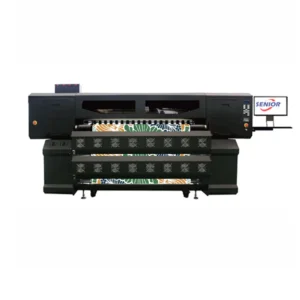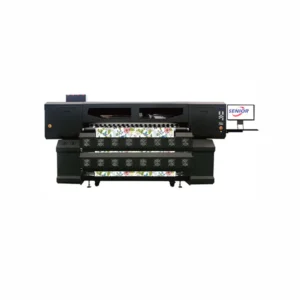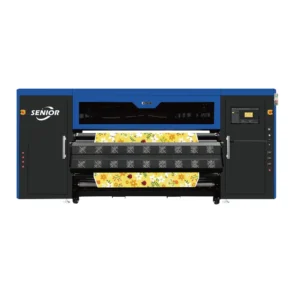1. What is UV printing
UV printing is a digital printing technology. It uses ultraviolet light to cure special inks. The main advantages are instant drying and wide material compatibility.
2. How UV printing works
The printer sprays UV ink onto the material. A UV lamp shines on the ink immediately. The light triggers a reaction in the photosensitive resin. The liquid ink turns into a solid film in 0.1 to 0.3 seconds.
3. UV printing vs traditional inkjet printing
UV printing dries instantly. It works on many types of solid materials. It can print on plastics such as acrylic, PVC, and ABS. It can print on metal, glass, ceramic, wood, leather, and stone. It can even print on curved surfaces. Traditional inkjet printing cannot do this.
4. Steps in UV printing
UV printing has several steps:
- Material preparation – Some materials need a UV primer for better ink adhesion.
- File design and layout – Use Photoshop or Illustrator to create and prepare files for the RIP software.
- Equipment and environment preparation – Start the printer. Preheat the system. Load the material. Check printhead height and condition. Check ink levels. Keep the right temperature and humidity.
- Print settings – Set the resolution, ICC color mode, and spot color channels in the RIP software. In the printer’s control software, set the number of passes for white ink and varnish. Adjust varnish effects, 3D effects, and thickness.
- Printing and monitoring – Print a test sample. Check the color, accuracy, and adhesion. Watch for missing colors or material movement during production.
5. Key features of UV printing
UV printing cures instantly. It supports many materials. It delivers high print quality with 3D and special effects. It is durable and eco-friendly. It is used in advertising, industrial decoration, customization, packaging samples, and gift production.
6. Applications in modern industry
UV printing started in advertising. Now it is used in industrial manufacturing. It supports small batch production. It works with complex materials. It increases efficiency and offers creative visual effects. It helps brands create unique products and improve supply chains. UV inks are now more flexible and heat-resistant. Printing technology is faster, larger, and more intelligent. Industrial applications will keep growing.
7. The future of digital printing
Digital printing is changing fast. UV printing is leading the way. It solves today’s printing problems. It is a strong platform for digital, sustainable, and personalized production.
8. Summary
UV printing is more than a printing method. It is a foundation for smart manufacturing.
- Current value: It supports small batches, multi-material printing, and functional integration.
- Future potential: Flexible UV inks, nanoscale precision, and AI will make UV printing a core technology for manufacturing. It will change how products go from concept to reality.







